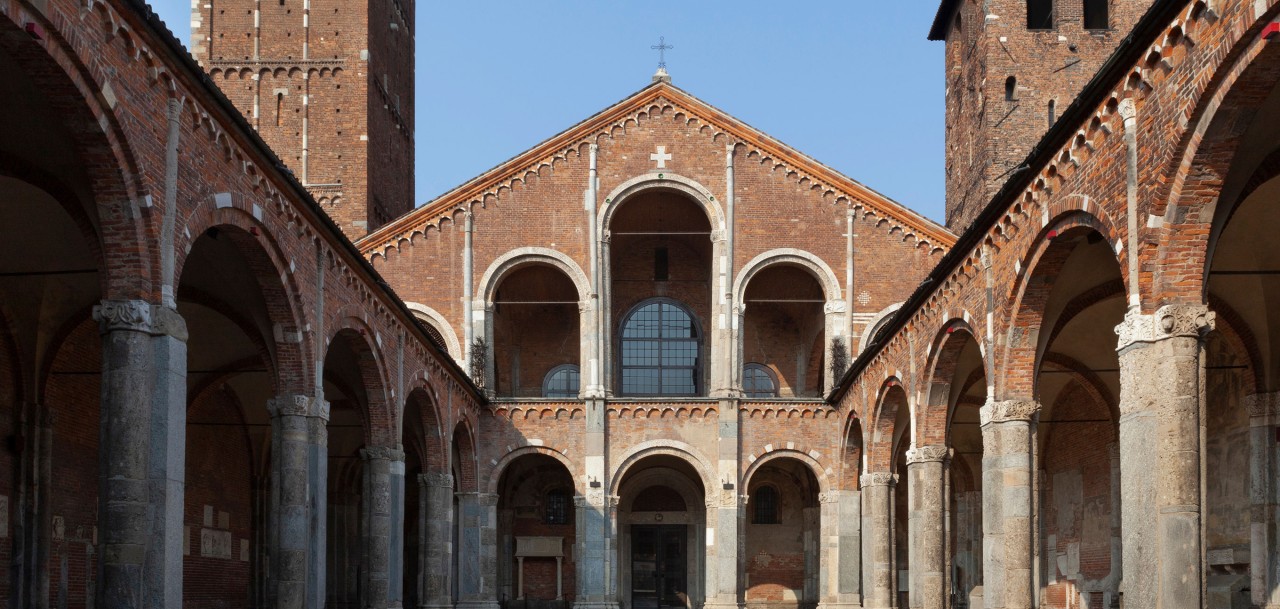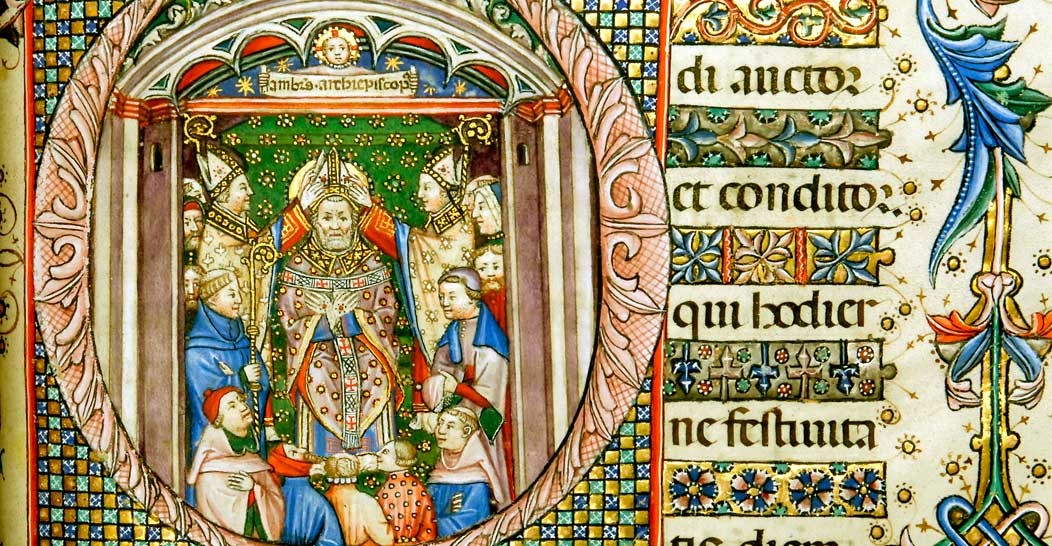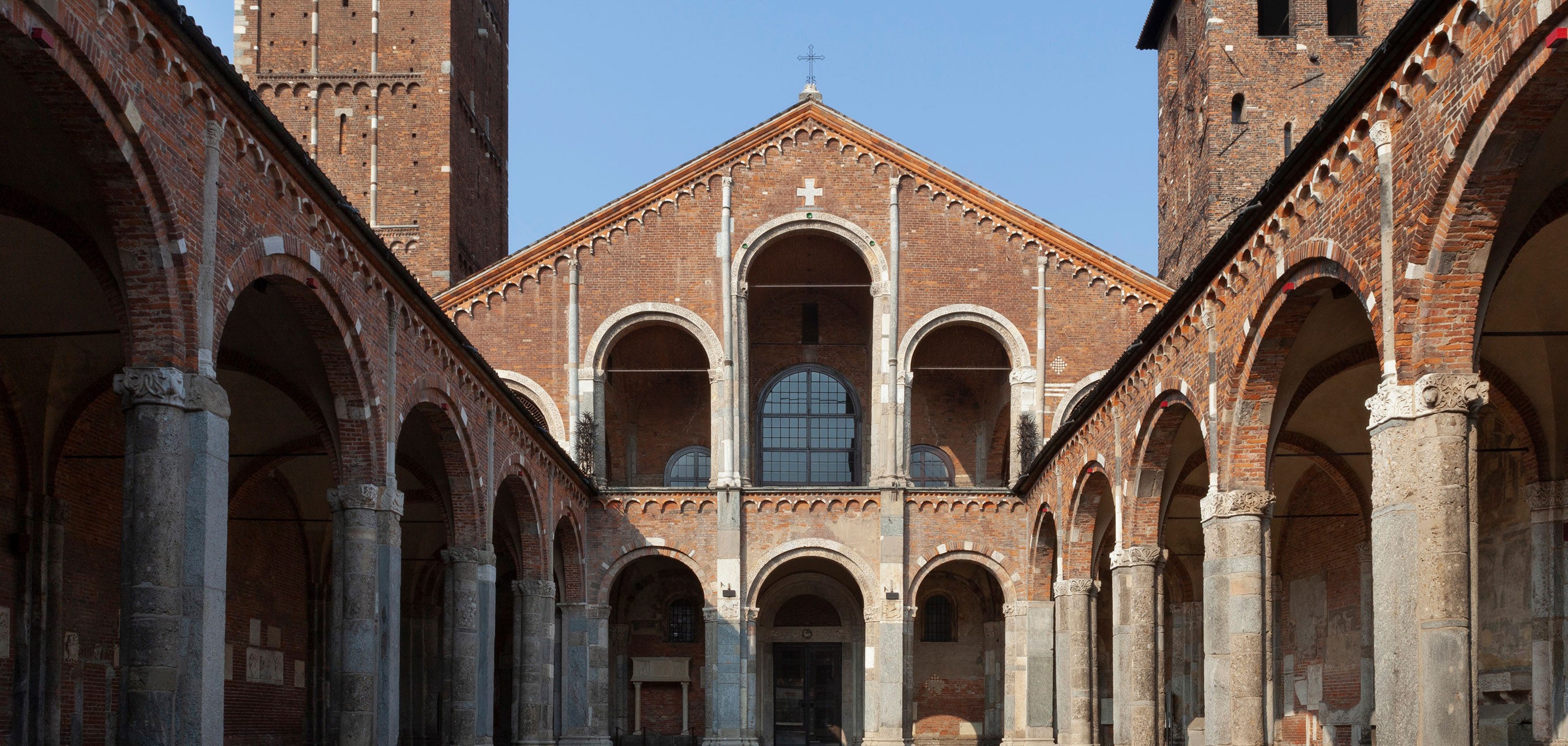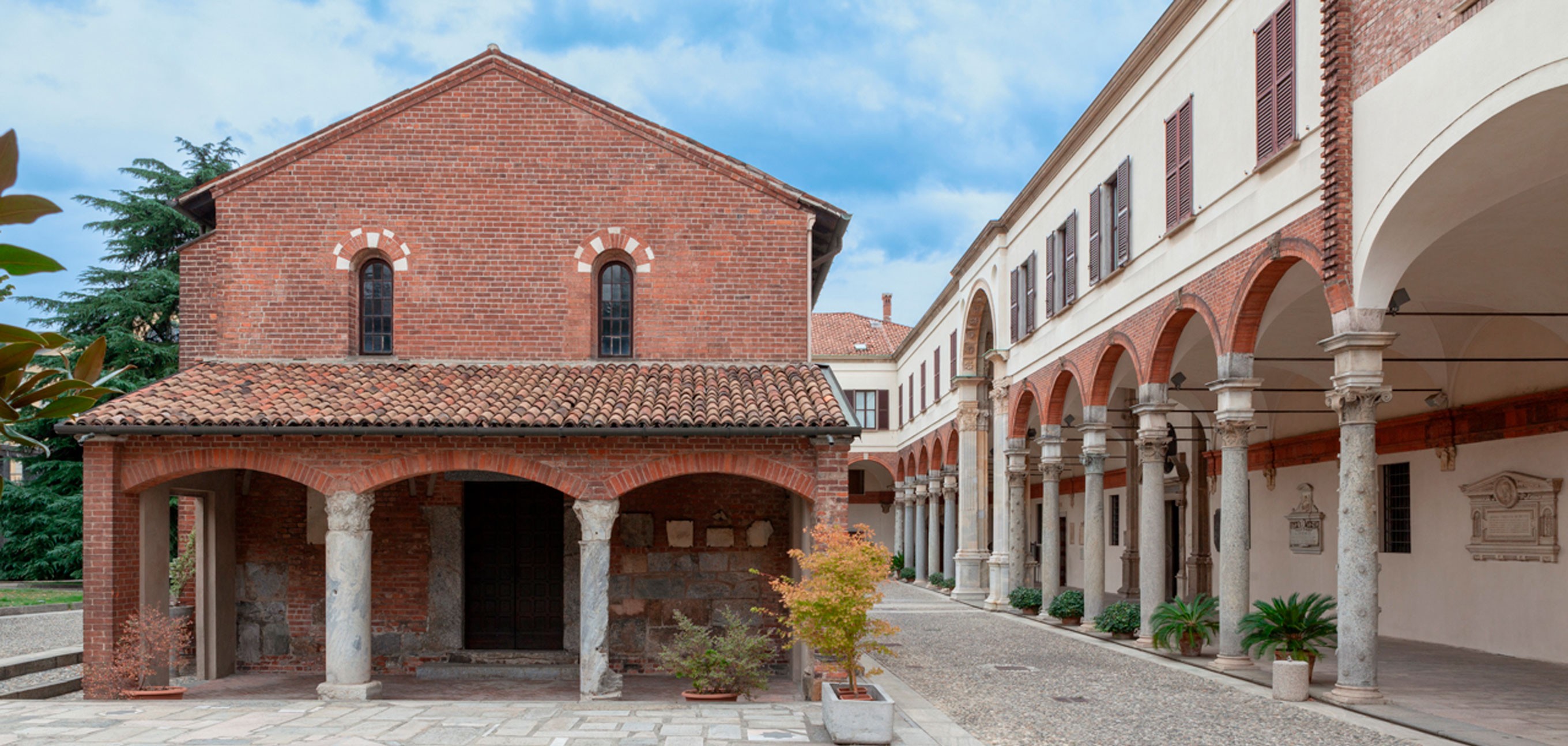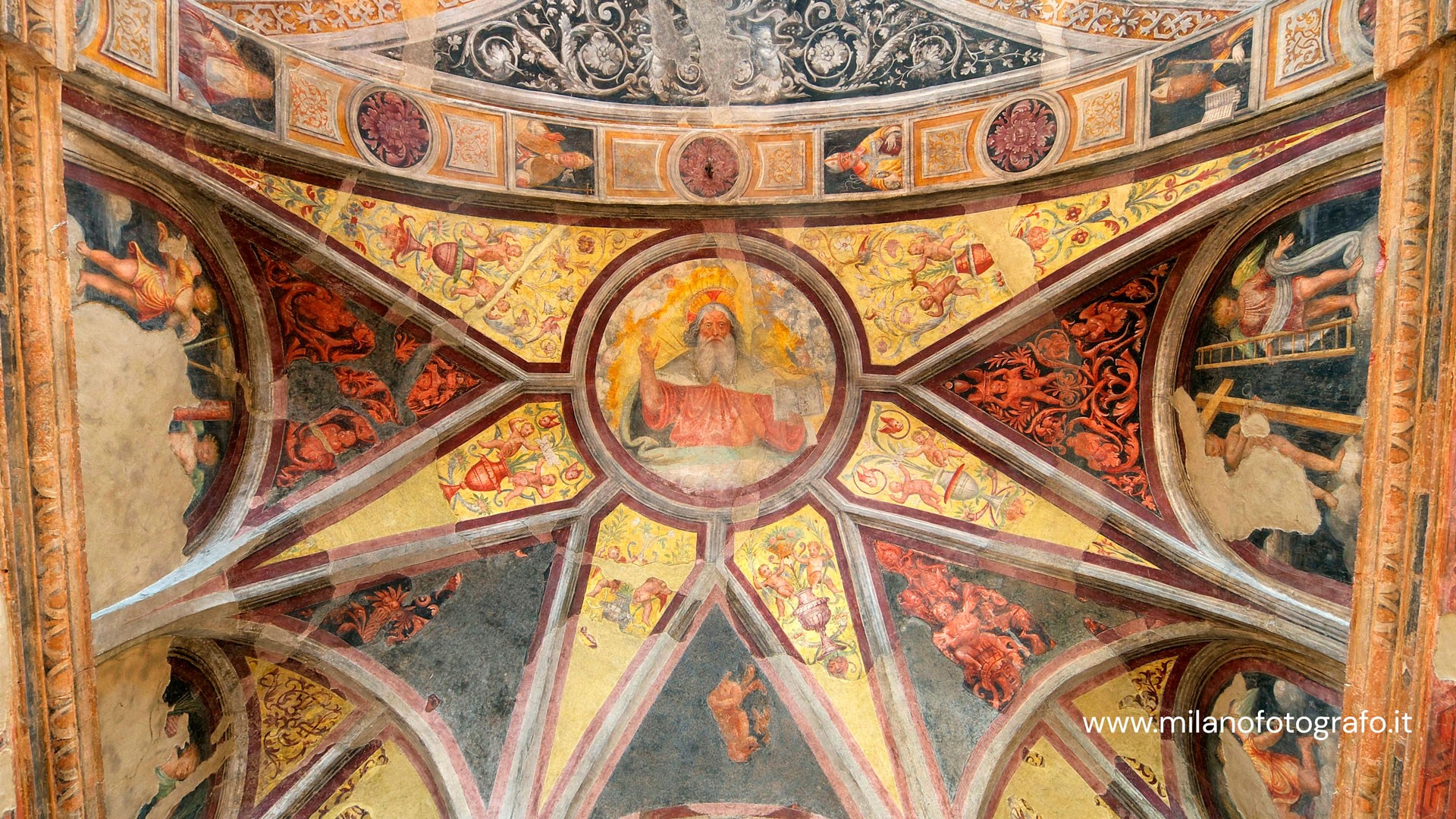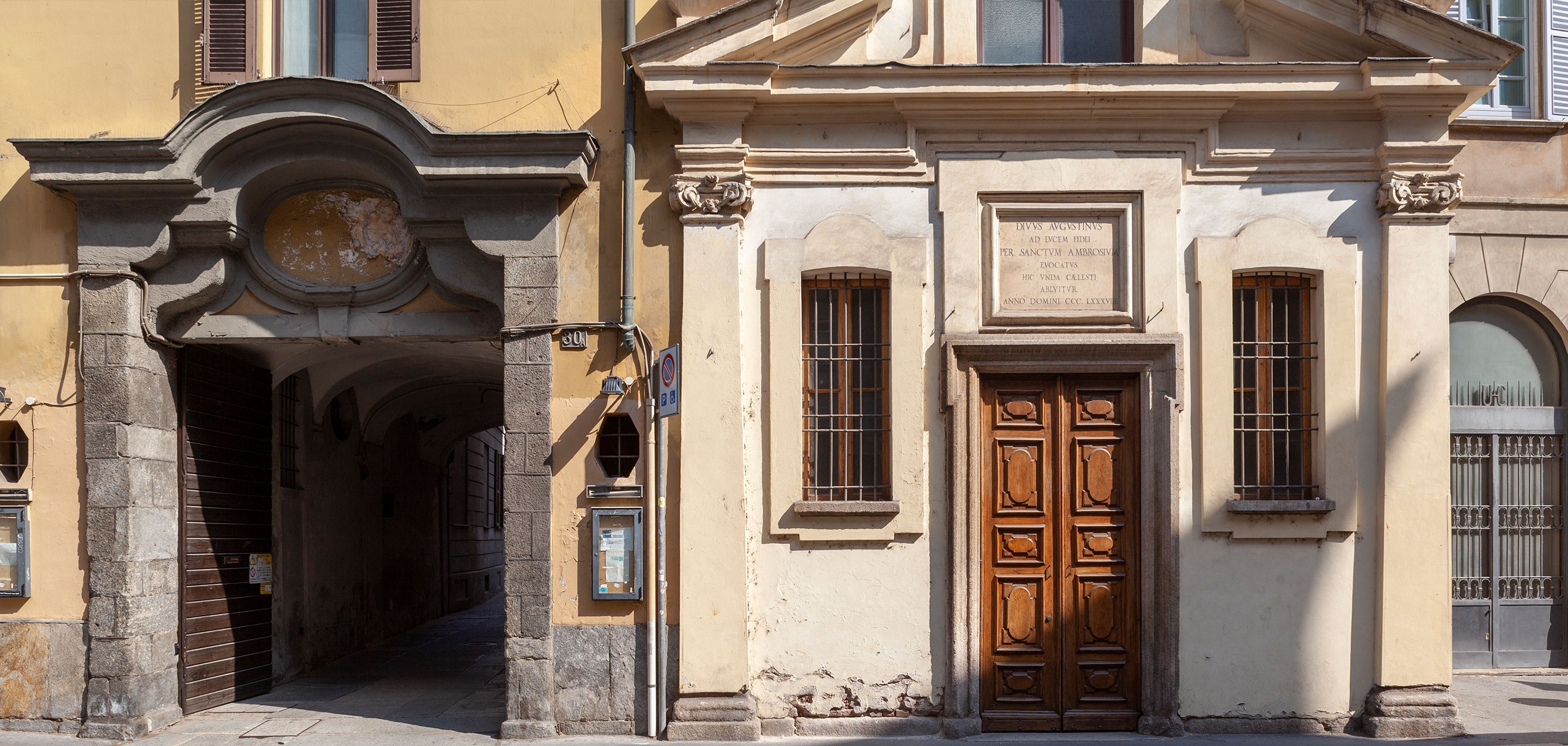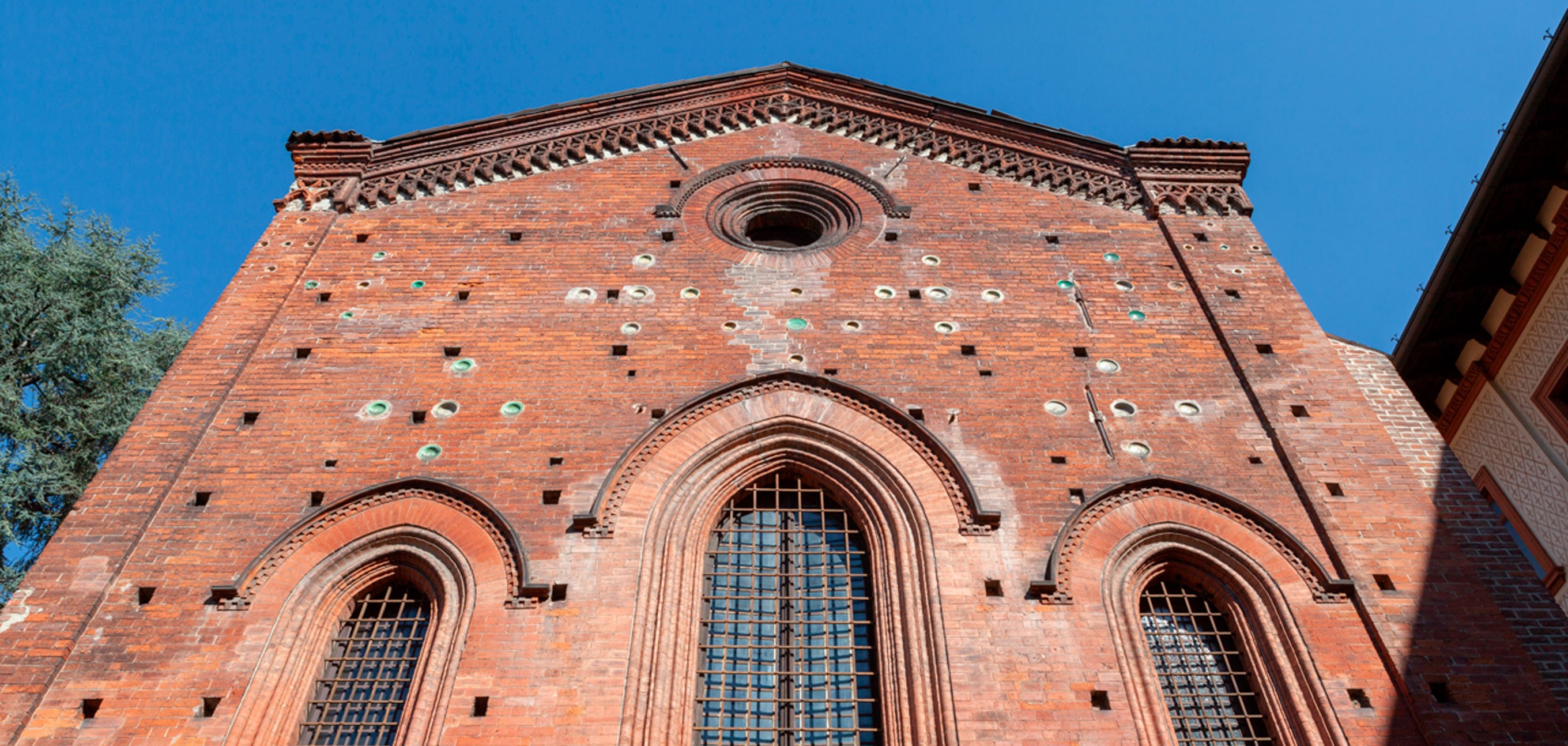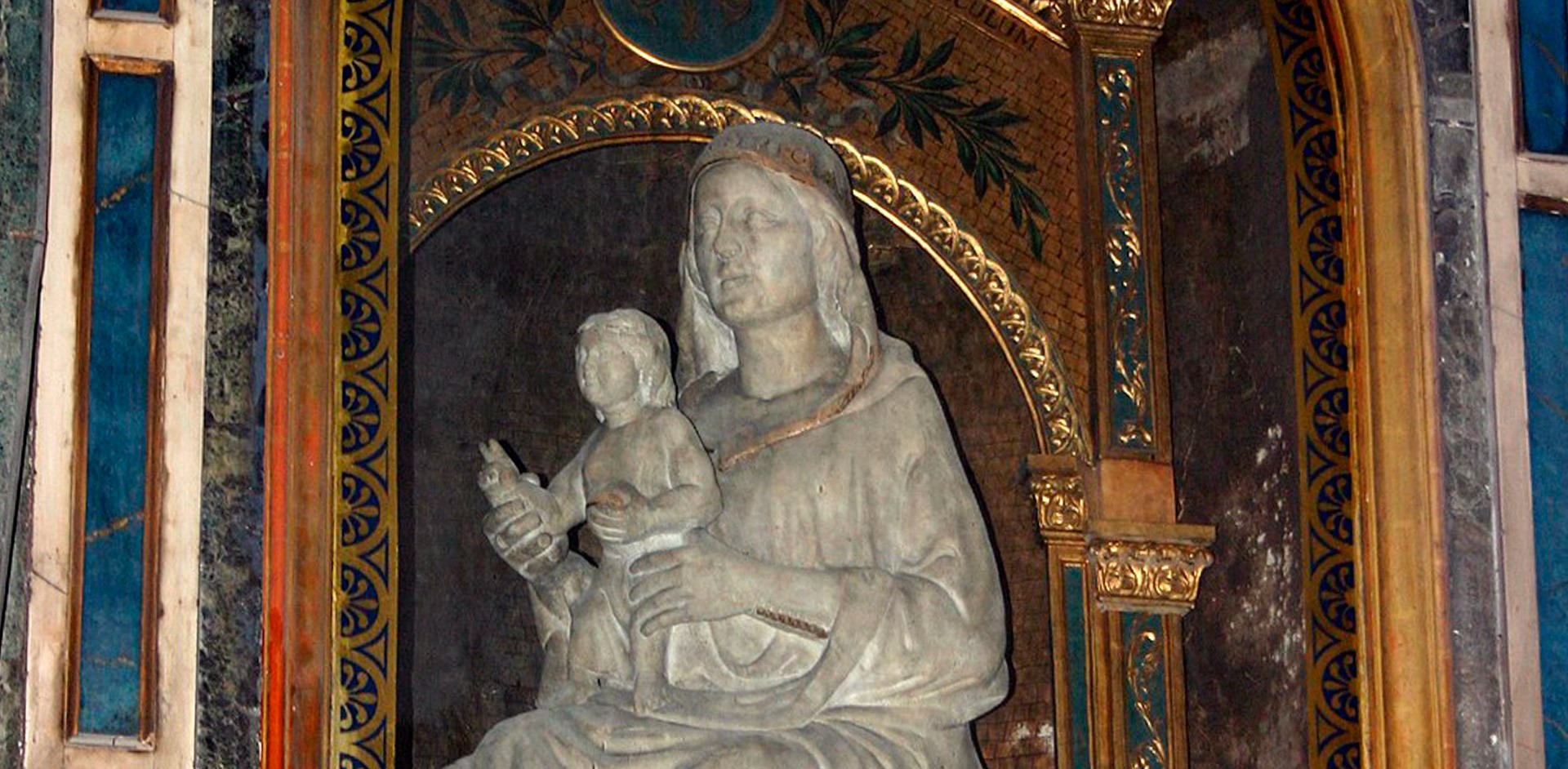In a letter to his sister Marcellina dated 386, Ambrose wrote of the extraordinary discovery of the remains of the martyrs Protasius and Gervasius, which he had moved to the new Basilica of the Martyrs, called the Ambrosian Basilica by the Milanese (ep. 77.2), his own chosen burial place.
Although it still preserves its basilica plan with a nave and two aisles, the current appearance of the church dates to the Romanesque reconstruction between the late eleventh century and first half of the twelfth. Preceded by a monumental four-sided portico (the ‘Atrium of Anspertus’), the sloped (‘gabled’) facade is marked by two orders of arcades, decorated with Lombard bands and flanked by two bell towers: one for the monks (ninth-tenth century) and one for the canons (twelfth century).
The nave is twice the width of the aisles and divided into four square bays, three covered with ribbed cross vaults and one beneath the dome lantern. The vaults are supported by large bundle pillars, above which there is a vast women’s gallery. The interior of the Basilica is decorated with masterpieces that attest to the centuries-long history of Ambrose’s church as the centre of Milan’s civil and religious identity. Built in a distinctive red brick, the Basilica of Sant’Ambrogio is considered a model exemplar of Lombard Romanesque architecture.

